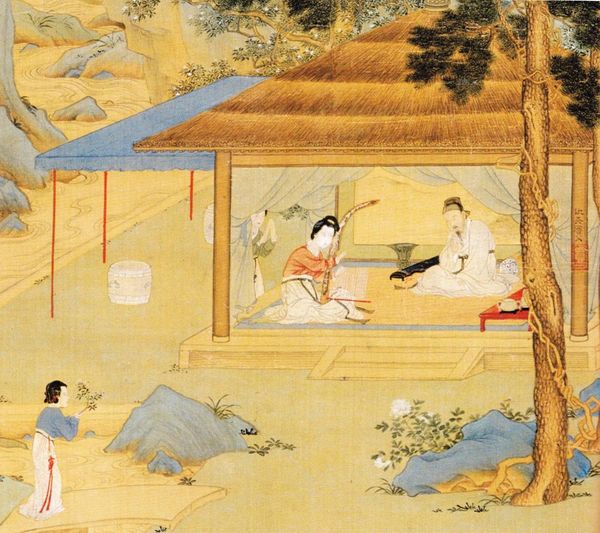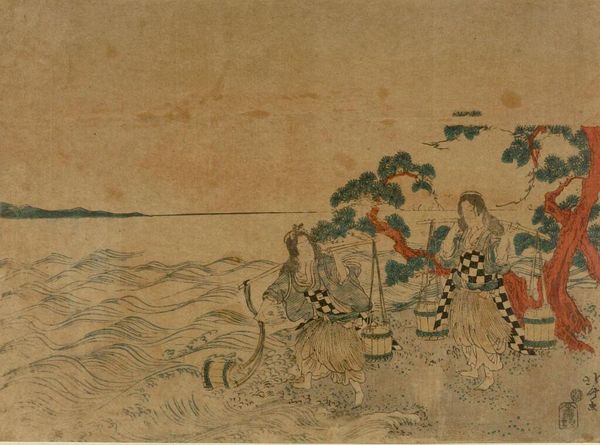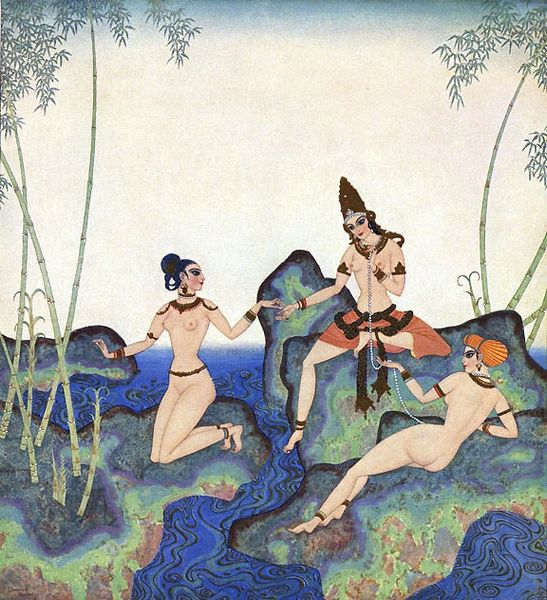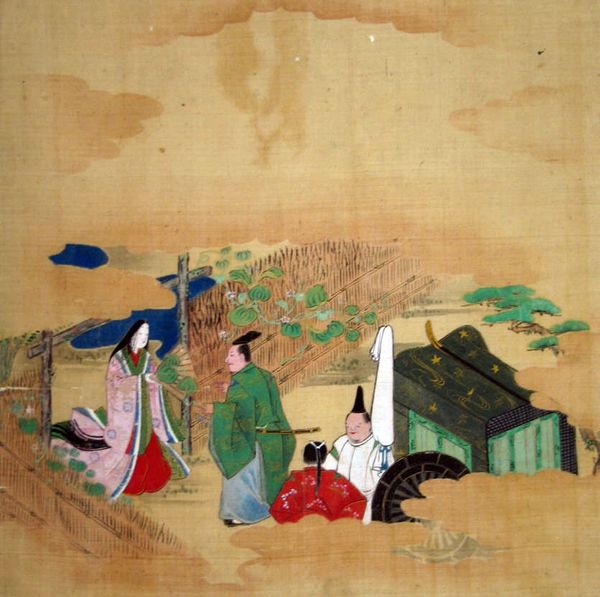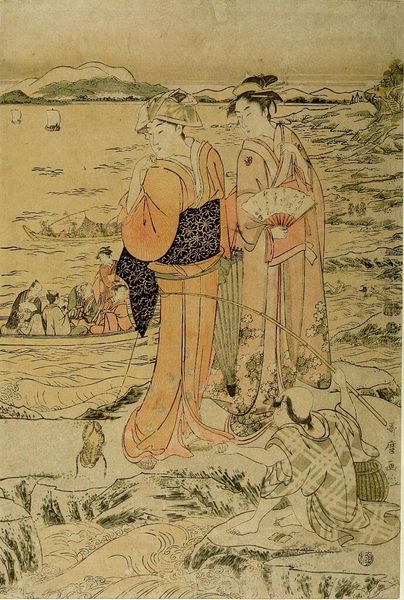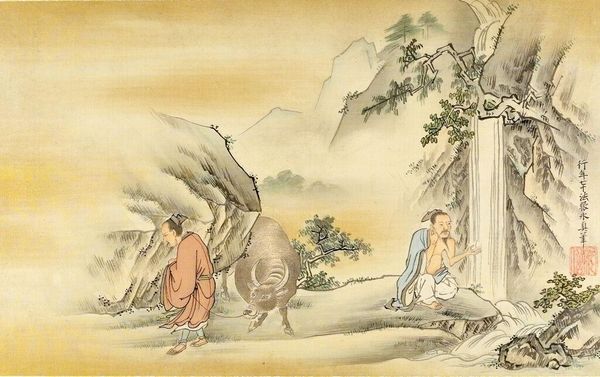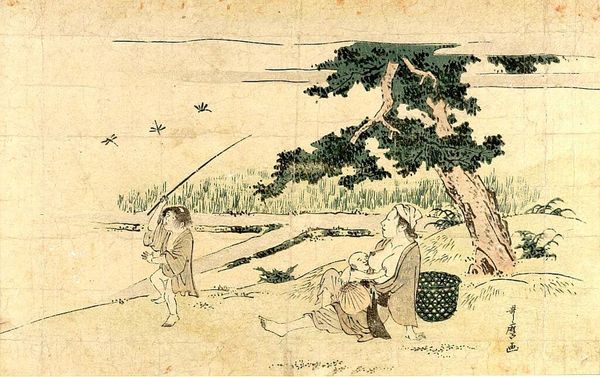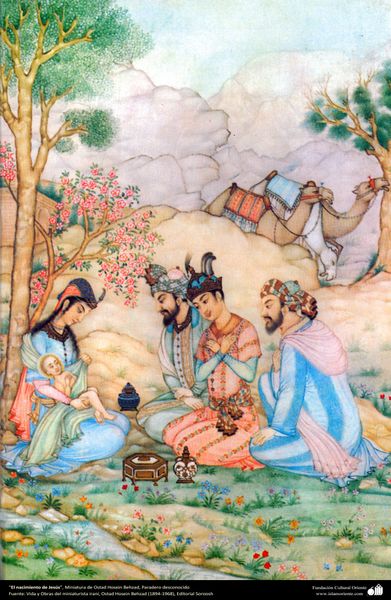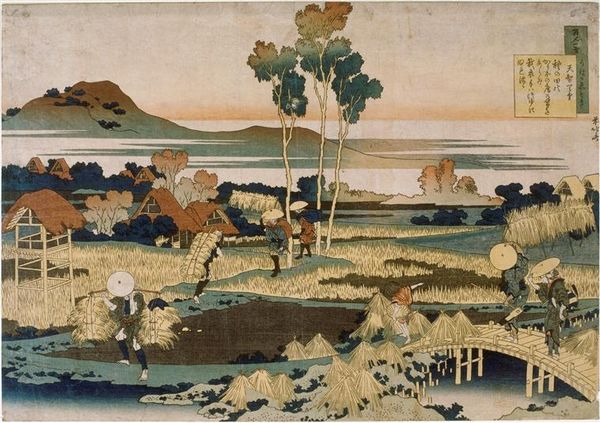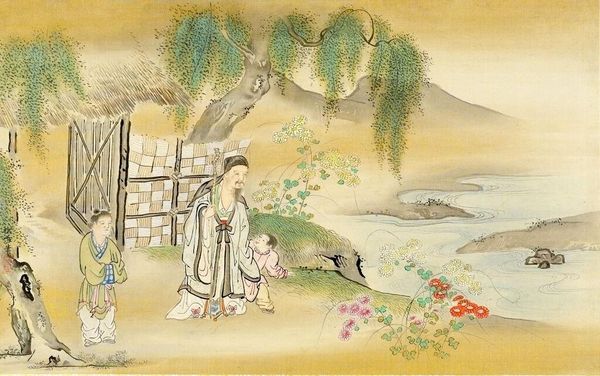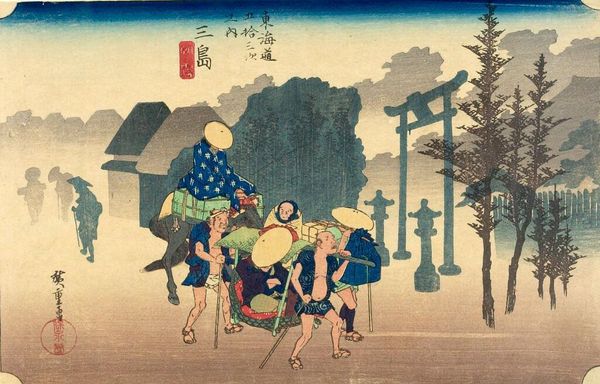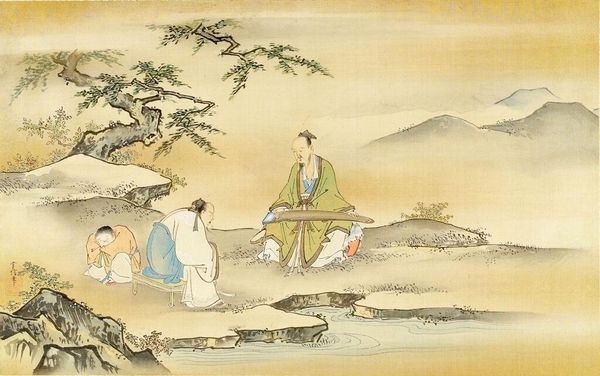
painting, watercolor
#
painting
#
landscape
#
figuration
#
watercolor
#
orientalism
#
symbolism
#
genre-painting
#
post-impressionism
Copyright: Public domain
Curator: Paul Gauguin’s "Tahitian Scene," rendered in watercolor around 1892, captures a tableau vivant, rich with layered meanings. It's held at the Thielska Galleriet in Stockholm. What's your immediate take? Editor: I’m hit by a dreamlike quality. It's strangely serene and unsettling all at once—a warm haze punctuated by these quiet figures, each seemingly lost in their own private world. Curator: Yes, there’s that intriguing blend of reality and imagination, heightened perhaps by Gauguin’s post-impressionistic and symbolist tendencies. Look at the placement of figures, a woman in the water, another crouching, and yet another figure who almost appears to be emerging from a painting within a painting, each representing their unique journey, perhaps representing life itself. Editor: Absolutely! It makes you wonder if they're connected or isolated, the fox, too, sleeping unaware or knowing. There's such emotional resonance here, like Gauguin is deliberately blurring the lines between observable life and subjective feeling. It's a little heavy for just a painting about a faraway island! Curator: He certainly used such “genre painting” scenes as a means to explore a deeper emotional terrain. This work embodies an interest in 'Orientalism'. Gauguin constructs his own vision of Tahitian life, viewed through his Western lens, full of symbolic weight. For instance, we could interpret the fox to indicate animal nature or desire, even a sign of a connection to spirits in Tahitian culture. What do you feel, particularly regarding its formal choices and design? Editor: I appreciate the tension. Gauguin doesn’t deliver some flawless landscape; there’s a looseness to the watercolor, as if things are half-remembered. The figures lack sharp definition, becoming archetypes of his construction. A place of escape or longing; an attempt to portray raw emotion over polished reality, no matter if true to life. Curator: Indeed. Gauguin seeks to render the essence of the experience through suggestive colors and simplified forms, rather than photographic accuracy. It seems the truth of these human truths for Gauguin rests beneath its tropical surface, don't you think? Editor: Yes. There is real value here, because like every artist who seeks that supposed escape into the exotic, Gauguin ends up holding a mirror to our universal inner landscapes too. I appreciate his exploration! Curator: A fitting testament, indeed, to the allure and complexity that art holds over culture and humanity, a point of thoughtful cultural exchange and conversation through symbol and image.
Comments
No comments
Be the first to comment and join the conversation on the ultimate creative platform.
